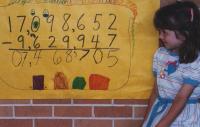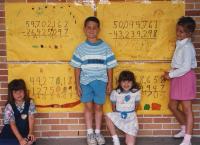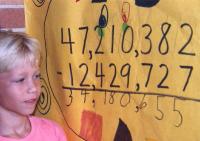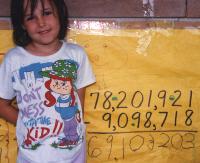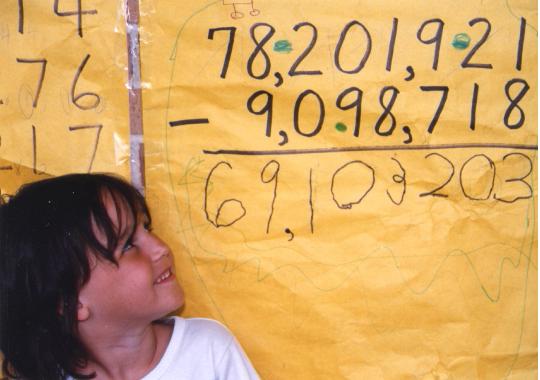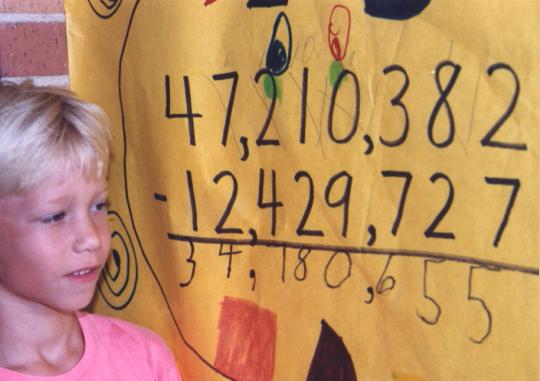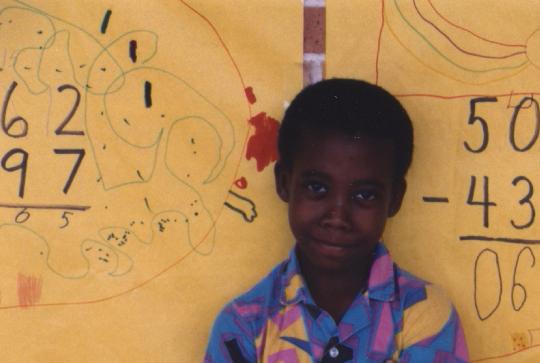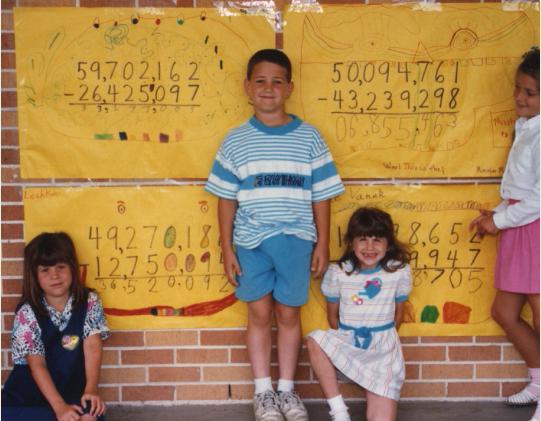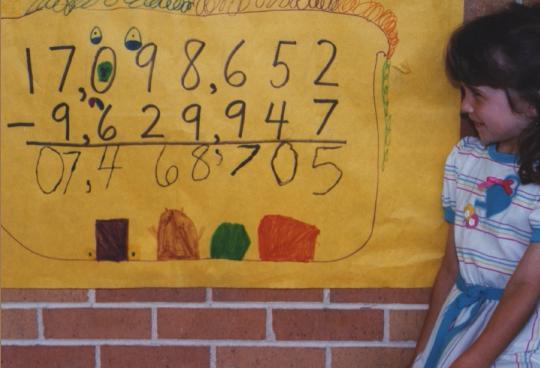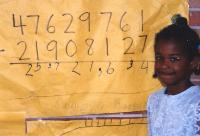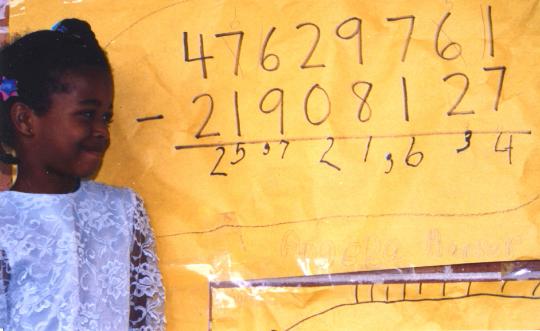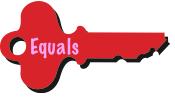 |
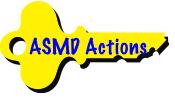 |
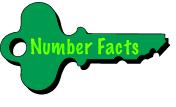 |
 |
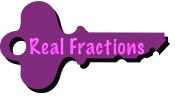 |
||||||||||
pre-calculator, pre-computer algorithm for merchants and bookkeepers that was practiced until it could be performed unthinkingly and was remembered because it was used practically every day. In contrast, Monster Subtraction is a story about an event—one of exporting—written in the quantitative language of arithmetic.
Avoid Hubris in Teaching Subtraction
Teachers who believe they are good teachers (which is most teachers) are prone to believe that the old ways of teaching subtraction that did not work for past teachers will work for them because they are such good teachers and put such effort into their teach-ing. Wrong! (We personally know this from having erred in believing the same.) See for yourself in examining the results of the aforementioned prepared by MOVE IT Math™ while still an outreach initiative with the University of Houston.
• Of 2,520 grade 3 students presented with the subtraction problem on the preceding page, namely, 5020 – 463, only 310—less than 13 percent— could solve it.
• Of 2,807 grade 6 students presented with it, as many as 1,038, or about 35 percent, could not solve it.
Click for the results for all of the grades tested.
Clearly, either most elementary school teachers are lousy teachers or the math lessons they have been teaching are lousy. Which would you rather believe? Whichever, the poor results cannot be blamed on the children. As demonstrated by the who solved 8,002,011 – 2,540,159 for Texas legislators at the State Capitol in Austin, all children can learn to subtract if taught sensibly and can do so even in grade 1.
Not My Students!
If you are an elementary school teacher, you may be thinking “not my students.” If so, you may be right while your students are with you and practicing subtraction regularly, but a secret that is well kept, probably because of confrontations that might ensue if it were not kept, is the poor performance in arithmetic of a notable percentage of students in later grades—even the next one. What might shock you would be to talk to the middle school math teachers who receive your students about the preparation of the students they get. Based on such talks that we have had, we expect they would tell you that many of the students they get still cannot subtract, that hardly any of them know their multiplication facts, and that only a few can multiply or divide!
Nor do the discouraging reports stop after middle school. Guess what high school math teachers are quick to say to all but the few seniors taking calculus or analysis: “You should know this by now!” Worse, if you examine the enrollment figures for virtually all junior colleges and most state universities in America, you will learn that well over half of their first-year students are enrolled in zero-credit-hour remedial basic math and algebra courses. So what if America’s children have, for decades, ranked near the bottom in international testing? Many of them cannot even “make change”!
Monster Subtraction
In ALL KIDS CAN LEARN ARITHMETIC, Monster Subtraction is taught in grade 1 along-side Monster Addition and is the most exacting topic taught. A teacher cannot chalk-and-talk it and be successful with very many children. To teach it effectively, we know of no other way than to begin by having children export Fair Lands™ blocks and/or colored counters in Two Land (base 2) and Three Land (base 3). For non-conservers of number, which includes many children in kindergarten, grade 1, and grade 2, teaching subtraction first in Two Land and Three Land is an absolute must. As explained on page 3, non-conservers of number cannot think logically about quantities as big as ten, but they can about quantities as small as two or three, which is as big as they get in Two Land and Three Land, respectively.
The goal in teaching Monster Subtraction is for children to become adept at trading “down,” that is, trading big things for little things the same in keeping with the “law of the land” for any “land” (base). Fortunately, the goal is easy to achieve using the guided discovery math lessons in the ebooks listed earlier for Monster Addition:
Fair Lands™ QUICK START Download FREE.
, K-6, 109 pages
, K-6, 108 pages
, K-6, 72 pages
CONTINUED: Next > | 1 | 2 | 3 | 4 | 5 | 6 | 7 | 8 | 9 | 10 | 11 | 12 | 13 | 14 | < Back
